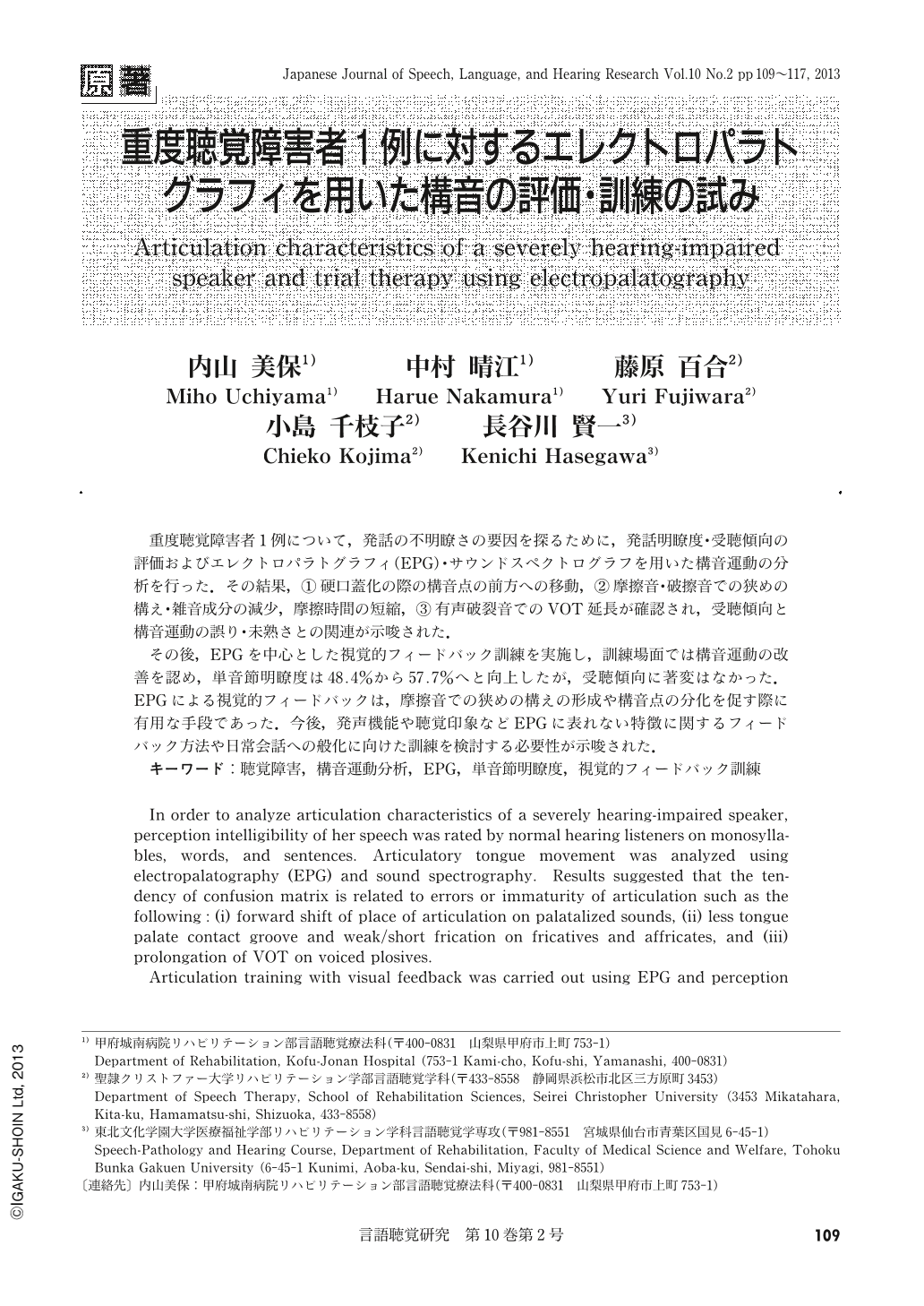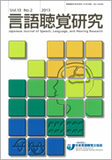Japanese
English
- 有料閲覧
- Abstract 文献概要
- 1ページ目 Look Inside
- 参考文献 Reference
重度聴覚障害者1例について,発話の不明瞭さの要因を探るために,発話明瞭度・受聴傾向の評価およびエレクトロパラトグラフィ(EPG)・サウンドスペクトログラフを用いた構音運動の分析を行った.その結果,①硬口蓋化の際の構音点の前方への移動,②摩擦音・破擦音での狭めの構え・雑音成分の減少,摩擦時間の短縮,③有声破裂音でのVOT延長が確認され,受聴傾向と構音運動の誤り・未熟さとの関連が示唆された.
その後,EPGを中心とした視覚的フィードバック訓練を実施し,訓練場面では構音運動の改善を認め,単音節明瞭度は48.4%から57.7%へと向上したが,受聴傾向に著変はなかった.EPGによる視覚的フィードバックは,摩擦音での狭めの構えの形成や構音点の分化を促す際に有用な手段であった.今後,発声機能や聴覚印象などEPGに表れない特徴に関するフィードバック方法や日常会話への般化に向けた訓練を検討する必要性が示唆された.
In order to analyze articulation characteristics of a severely hearing-impaired speaker, perception intelligibility of her speech was rated by normal hearing listeners on monosyllables, words, and sentences. Articulatory tongue movement was analyzed using electropalatography (EPG) and sound spectrography. Results suggested that the tendency of confusion matrix is related to errors or immaturity of articulation such as the following:(i) forward shift of place of articulation on palatalized sounds, (ii) less tongue palate contact groove and weak/short frication on fricatives and affricates, and (iii) prolongation of VOT on voiced plosives.
Articulation training with visual feedback was carried out using EPG and perception intelligibility of monosyllables improved from 48.4% to 57.7%. However, there were no significant changes in the tendency of confusion matrix. Training with EPG was effective in stimulating groove formation on fricatives and differentiating places of articulation. Further study is required to search for other methods of feedback and training for generalization to conversational speech.

Copyright © 2013, Japanese Association of Speech-Language-Hearing Therapists. All rights reserved.


